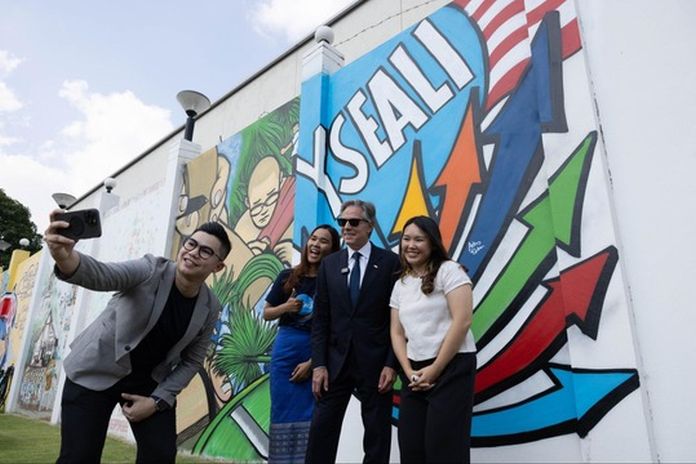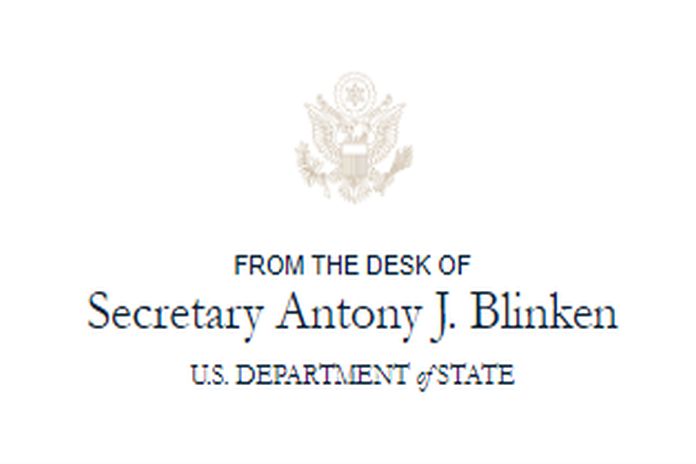Secretary Antony J. Blinken
As President Biden often says, so much of our future will be written in the Indo-Pacific. During my travels to Laos, I underscored the importance of the U.S.-ASEAN Comprehensive Partnership, which continues to deliver for our people: improving maternal and child health, supporting sustainable development, healing the wounds of war, and investing in the potential of – and ties between – our people.
That focus on the needs and on the aspirations of our combined one billion people is what animated our work this week at the ASEAN-U.S. Summit and at the East Asia Summit. These important engagements again showed the power and possibility of our partnerships, and I’m grateful to all of our ASEAN friends for their continued efforts to advance a common vision for the region.
Today, because of a lot of diplomacy over these last three and a half years, the United States and our Indo-Pacific partners are closer and more aligned than ever. As a fellow Pacific nation, the United States will continue to work with our partners to shape a brighter future for all our people.
In 2022, President Biden pledged a “new era” in U.S.-ASEAN relations. We’ve expanded our collaboration on long-standing priorities like economic issues and defense, but also launched many new initiatives in many new areas – from public health to clean energy to women’s equality – reaffirming the central role that ASEAN must play.
The United States is ASEAN’s number one provider of foreign direct investment, and that’s very meaningful, because it tells you there’s tremendous trust and confidence in the future. And it also is a tremendous generator of jobs and opportunity. We have more than 6,200 American companies operating in the region, supporting hundreds of thousands of jobs locally but also in all 50 states.
Investing in ASEAN
We committed not only to growing our Comprehensive Partnership but to continuing to modernize it. We’re working to implement the ASEAN Single Window, a one-stop portal that will make regional trade faster, cheaper, and more reliable. That initiative has cut transaction times by four days and saved more than $6.5 billion.
With the ASEAN digital economy projected to top $2 trillion by 2030, we’re equipping professionals and students in the region with the skills that they need to succeed in this 21st century economy. We’ve created an online education platform that’s enabled tens of thousands of people to complete courses and earn credentials in subjects like science, technology, and entrepreneurship.
Recognizing the power of artificial intelligence to accelerate progress on the Sustainable Development Goals – ending poverty, eradicating hunger, and bringing health care to more people – we’ve adopted a U.S.-ASEAN Leaders Statement on AI, so that our countries can help shape the development, the use, the governance of safe, secure, and trustworthy artificial intelligence.
And through a new five-year compact, a partnership between ASEAN and the U.S. Agency for International Development, we’re helping to empower ASEAN to identify areas where the region needs more capacity – for example, planning infrastructure projects – so that we can ensure that we’re meeting the region’s most pressing needs.

The foundation of the partnership between the United States and ASEAN is our people. This year marks a decade of the Young Southeast Asian Leaders Initiative, a remarkable partnership that involves over 160,000 young people.
To sustain that momentum, we’re doubling the YSEALI program and the number of ASEAN Fulbright students who’ll be studying in the United States. We’ve already established an ASEAN Center in Washington to help foster greater economic and cultural ties between our nations.
We’re also working to unleash the potential of all our people. Building on last year’s first ASEAN high-level dialogue on disability rights, we’re working to make ASEAN’s economy and infrastructure more accessible and more inclusive for people with disabilities.
All of these investments – in our economies, in our health systems, in our infrastructure, in climate, in people – all of these investments are good for people in ASEAN countries and for Americans back home: creating jobs, powering innovation, addressing challenges that we can only effectively meet when we’re working together.
Addressing Issues of Shared Concern
That’s also true when it comes to regional and global issues of shared concern. We continue to underscore the importance of upholding freedom of navigation and overflight in the South and East China Seas, as well as the need to maintain peace and stability across the Taiwan Strait.
We’re intensifying our efforts to chart a more peaceful, inclusive, democratic future for Myanmar and address the DPRK’s dangerous and destabilizing behavior. We’re standing for the sovereignty, the independence, the territorial integrity of Ukraine, and the ability of people everywhere to chart their own course, to choose their own future free from force, coercion, and aggression.
We also discussed the conflict in the Middle East. Last week marked one year since the horrific October 7th attack on Israel, where, among other things, citizens of ASEAN nations were among the hundreds killed or captured by Hamas, including six Thai citizens who remain hostages to this day. We continue to engage intensely to prevent broader conflict in the region, to bring all the hostages home, to get assistance to Gazans who so desperately need it and end the conflict. We are also working to reach a diplomatic solution in Lebanon, to support Israel’s right to defend itself against Iran and its terrorist proxies, to find a path to halt the cycle of violence and move toward a more integrated and prosperous Middle East.
As the United States and our Indo-Pacific partners have drawn closer together, we’ve also worked to deepen the connections between partners in this region and around the globe – particularly in Europe. ASEAN and the EU held their first summit in 2022, and they’ve expanded cooperation on everything from cybersecurity to counterterrorism to climate change, reinforcing our own efforts in these areas.
This collaboration across regions reflects the fact that our fates are intertwined. Making life better for our people requires us to coordinate in novel ways, to build new coalitions, to reinvigorate and reimagine existing partnerships. I’m grateful to all of our ASEAN friends for their continued efforts to advance a common vision for the region and for our shared future.
Sincerely,
Secretary Antony J. Blinken

